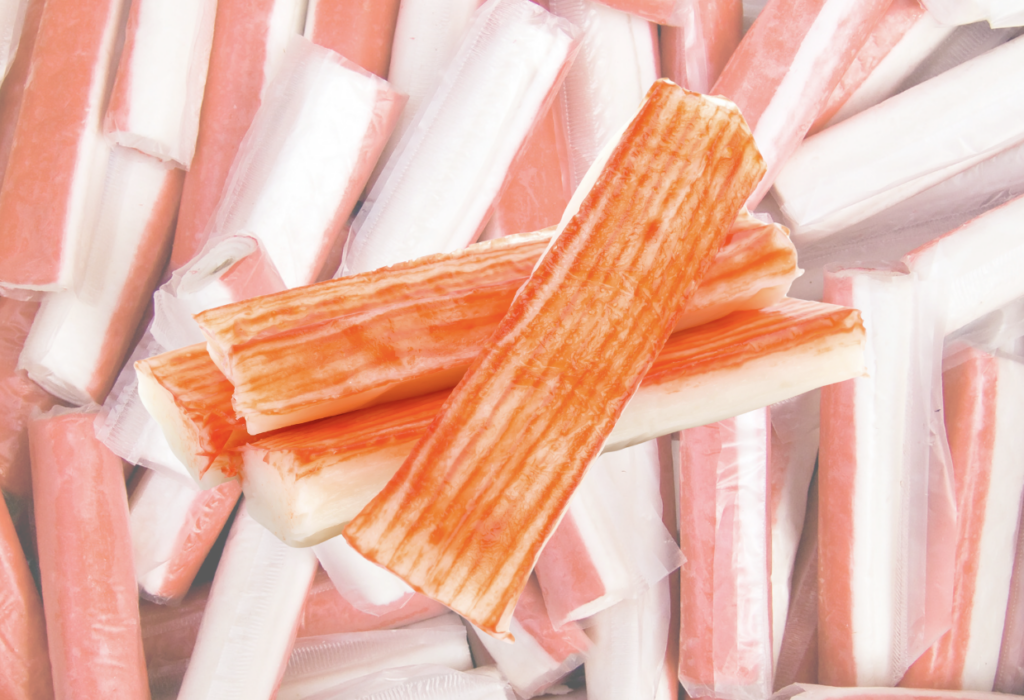Food News & Trends
What You Should Know About Imitation Crab
There’s a high chance you’ve tasted imitation crab in a California roll or crab dip, but you probably don’t know how the crabby carbon copy came to be, how it’s created, and what else you can do with it. Fortunately for you, we have all of that information (and more). We spoke with Jade Silverstein, Sustainable Seafood Consultant and Sales Associate at Cold Spring Fish, to learn the truth about fake crab.
“Imitation crab is made of white fish, starch and other ingredients to create the texture and taste of crab meat,” Silverstein said. “The preparation of fish for imitation crab is actually a Japanese method called surimi, which is used not just for it but also to make fish sticks, fish cakes and other popular seafood dishes.”
According to an Oregon State University article from 2007, for hundreds of years, Japanese chefs have made surimi by combining leftover fish filets with salt to make a form of “fish gel” to preserve the additional catch. In the 1960s, a Japanese scientist discovered that adding sugar to surimi allowed it to be stabilized and frozen, creating the international surimi business and expanding its use. Surimi is blended with other materials, then cooked and squeezed into crab-like forms to produce imitation crab.
“Yes,” Silverstein confirms. “Imitation crab tastes like crab and can be used in place of crab meat.” It is a particularly delightful and healthful solution for children who may dislike the flavor of crab flesh.”
“The common perception of it is that it is an artificial product because of the term ‘imitation,'” Silverstein adds, “but it is important to remember that it is made with fish.” “The fish used in imitation crab are white fish such as pollock, cod or haddock, which are some of the most commonly consumed fish on the market.”
She also notes that the starch in it is manufactured from wheat, but each brand’s product contains a different combination of components, with some utilizing genuine crab flesh and seasoning, which is why it’s better to avoid it if you have crab allergies.
“Imitation crab looks and cooks just like crab meat, but its texture is slightly different, often smoother and denser than actual crab meat,” Silverstein said. While the name “imitation” or “Krab” is often used in the United States, Silverstein claims that some nations’ advertising rules prohibit the usage of the term “imitation crab.” “You may see ‘fish sticks’ or ‘fish cakes’ on the packaging of products intended to be used as imitation crab,” she said.
Although the contents in various kinds of it may vary, according to Healthline, surimi accounts for roughly 35-50% of “imitation crab,” with the remainder of the ingredients often including water, starch, protein, sugar and sorbitol, vegetable oil, and salt. Check the ingredients label before purchasing fake crab.


